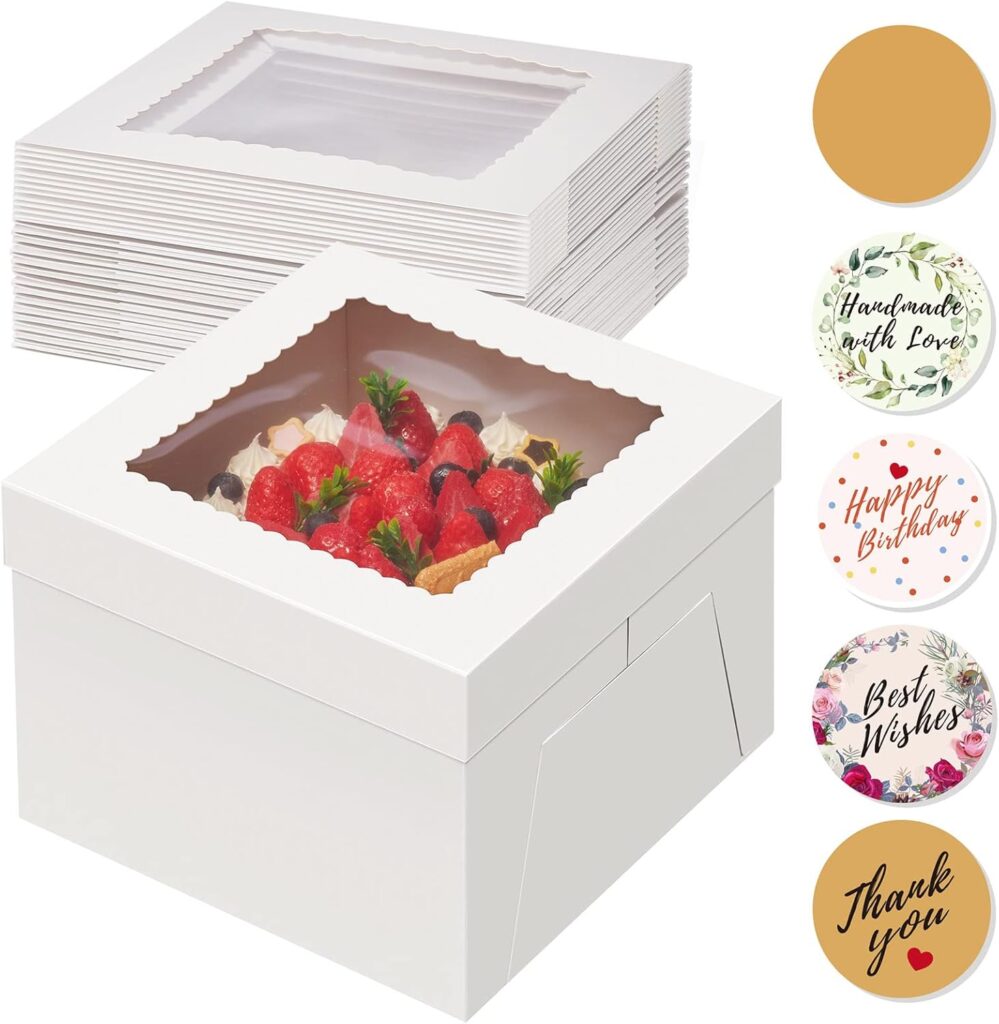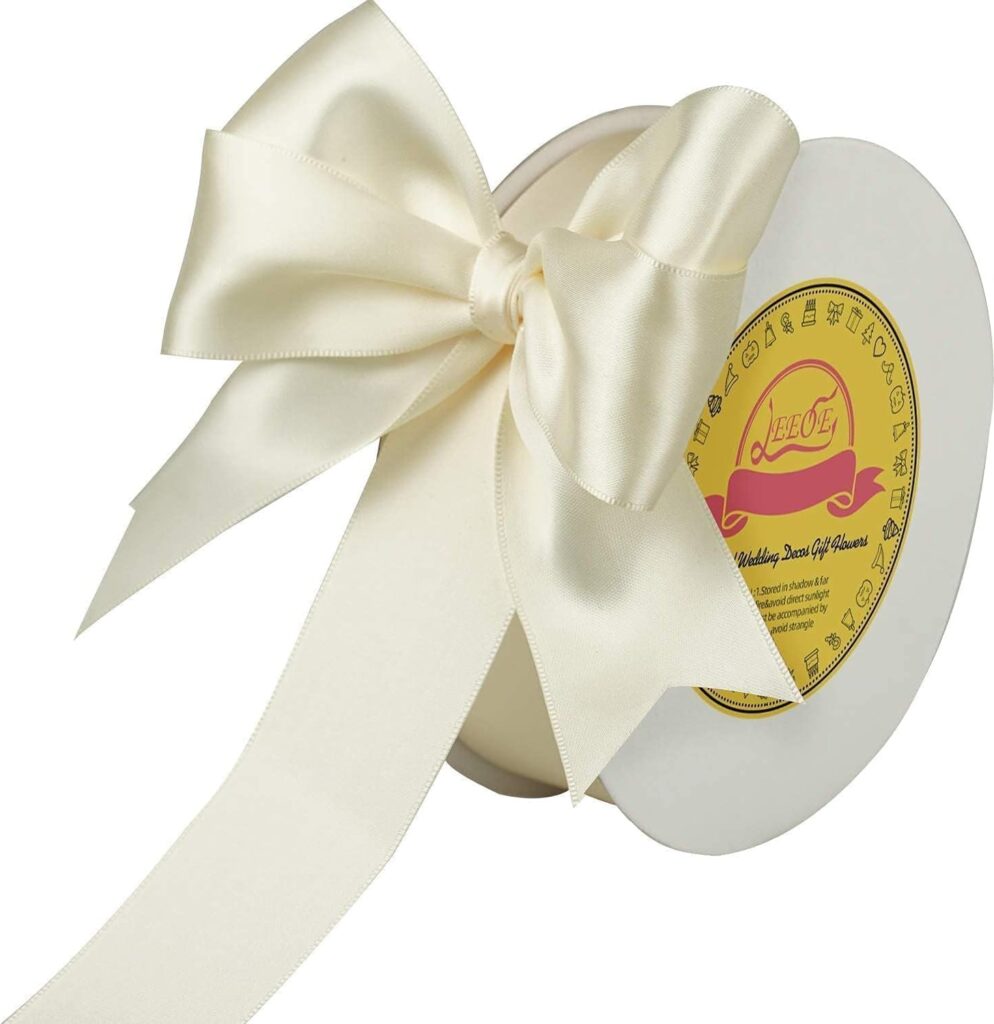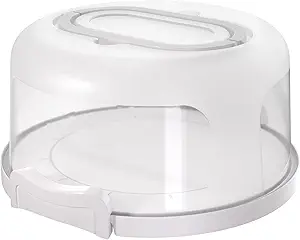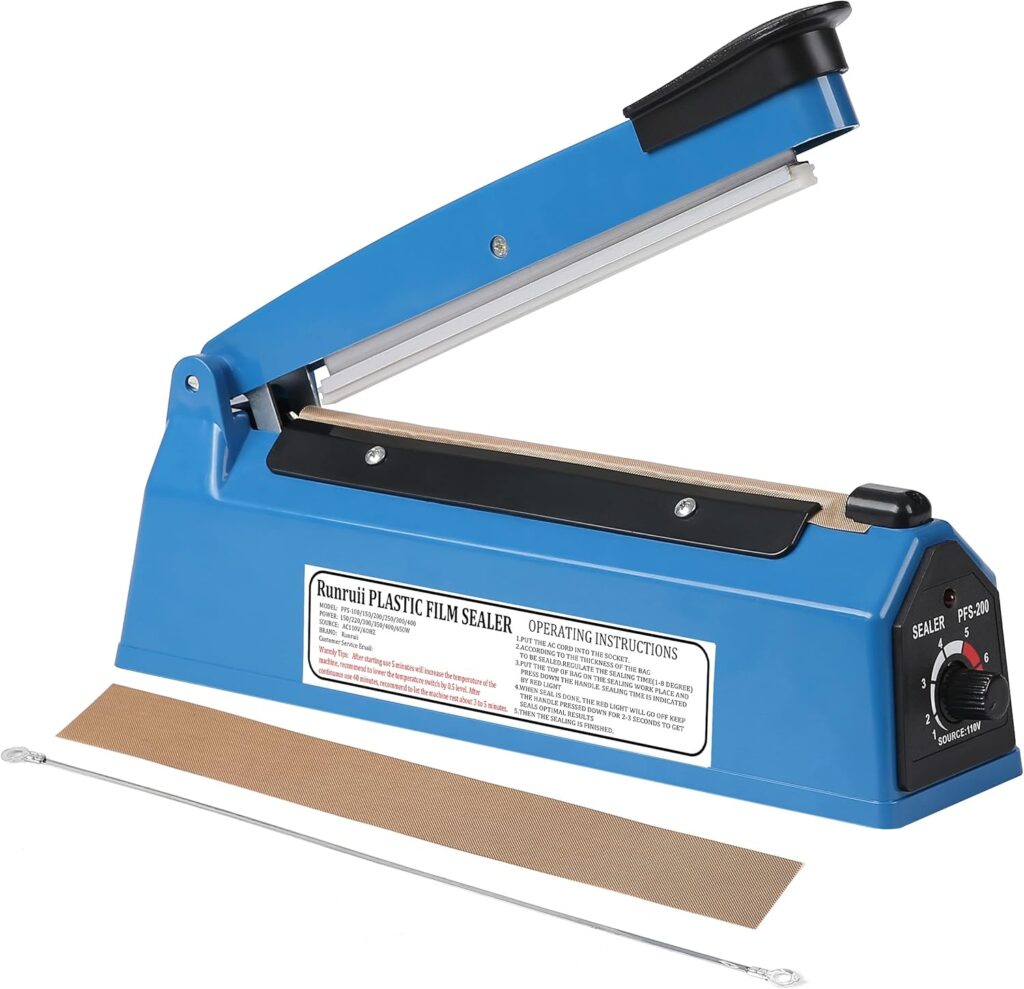Establishing a home baking business is a thrilling experience that turns your love of making gorgeous cakes into a successful business. However, setting a fair price for their goods is one of the most difficult tasks facing novice home bakers. If the price is too cheap, you will put in endless hours without getting paid fairly. If you raise your price too soon, you risk turning off potential clients before building a solid reputation.
The cost of ingredients is only one aspect of the art of cake pricing. Long-term success necessitates knowing your market, appreciating your time and abilities, and putting yourself in the best possible position. With the help of this thorough guide, you will learn the expert pricing techniques used by prosperous home bakers to establish profitable enterprises and make sure each cake you produce significantly boosts your bottom line.
These expert insights can help you price your cakes with clarity and conviction, regardless of whether you’re just starting out or trying to revamp your current pricing structure. Keep in mind that setting fair prices isn’t only about generating money; it’s also about creating a lasting business that lets you keep doing what you love while giving your clients great value.
Understanding the True Cost of Cake Creation
Prior to establishing any pricing, you need to be aware of all the expenses related to making your cakes. Many novice home bakers make the crucial error of focusing solely on ingredient costs, which results in unsustainable pricing that ignores the entire extent of their investment.

Kootek 15pcs Cake Boxes, 10x10x8 Inches Tall Cake Box with Window, White Bakery Boxes, Large Baking Boxes, Square Cardboard Cake Box
Direct Ingredient Costs: Determine the precise cost of each ingredient used in each cake first. In addition to the obvious ingredients like flour, sugar, and eggs, don’t overlook the little ones like food coloring, vanilla essence, and decorative accents. For proper pricing, develop comprehensive recipes with exact measurements and figure up expenses per unit.
Pay attention to changes in ingredient prices, particularly for high-end products like real vanilla, fine chocolate, or specialty flours. Because these expenses might fluctuate greatly throughout the year, your pricing should be based on current market rates rather than out-of-date estimates.
Hidden Material Costs: In addition to supplies, think of boxes, ribbons, cake boards, packing materials, and any additional decorations you offer. Every order should account for these “small” expenses because they quickly mount up. Professional presentation materials are essential to your business image and service quality; they are not optional.
Add the price of the parchment paper, piping bags, tips, and other throwaway baking materials needed to make each cake. Even reusable things like measuring cups and mixing bowls need to be replaced eventually, so factor that in when determining your entire budget.
Equipment Depreciation: Professionally made mixers, ovens, cake pans, and decorating supplies are expensive purchases that should be covered by your prices. Determine the primary equipment’s yearly depreciation expenses and include them in your price formula.
Think about how much it will cost to replace and maintain the equipment over time. Planning for the replacement of that stand mixer can guarantee that you’re ready for any changes that may be required without interfering with your company’s daily operations.
Calculating Your True Hourly Rate
As a home baker, time is your most valuable resource, but it’s frequently the most underappreciated factor when determining prices. Professional bakers are aware that they should be adequately compensated for every minute spent on their business, from the first consultation to the last delivery.
Tracking All Time Investments: Document every task involved in completing an order: client consultation, recipe development, buying for ingredients, baking time, decoration, packaging, and delivery. Inexperienced bakers are frequently surprised to learn that even a “simple” birthday cake could take four to six hours to complete.
Add in administrative duties including maintaining equipment, updating social media, responding to emails, and handling bookkeeping. Long-term success depends on certain business maintenance tasks, which should be included in your price plan.

Double Face Ivory Satin Ribbon 1-1/2 inch X 50 Yards Polyester Ivory Ribbon for Gift Wrapping
Determining Your Target Hourly Rate: To determine a reasonable hourly cost, look at similar service sectors in your region. Take into account the specialist nature of creating custom cakes as well as the potential income from other skilled jobs. Keep in mind that you’re contributing both technical know-how and creative artistic expression. Take into consideration the erratic nature of cake business earnings. In contrast to typical employment, cake orders may be concentrated during specific seasons of the year or week, so your hourly wage must account for slower times when you’re developing your business rather than baking.
Skill Level Adjustments: When making plans for improvement, be honest about your present level of proficiency. While gaining expertise and reputation, new bakers may begin with lower hourly rates; nevertheless, they should have clear plans for rate rises as demand and skill levels develop.
Take into account varying prices for various kinds of work. Simple sheet cakes may fetch one price, but because they need specific skills, hand-painted designs or elaborate sugar flowers warrant premium cost.
Market Research and Competitive Analysis
It is essential to understand your local market in order to properly position your pricing. This is more than just matching rivals’ costs; it’s about comprehending the value environment and figuring out where you fit in best.
Local Market Assessment: Look at local grocery store cake possibilities, commercial bakeries, and other home bakers. Take note of their service levels, specializations, and pricing schemes. This helps you find market gaps you could fill and gives perspective for your own pricing selections.
Take into account the spending patterns of your target audience. While some regions may be more price-sensitive and call for value-focused positioning, rich suburban areas may support premium pricing for high-end custom cakes.
Stripe Ribbon for Gift Cake Present Wrapping Craft DIY
Service Differentiation: Determine what makes your cakes unique from those of competitors. Maybe you offer unusual flavor combinations, are an expert in dietary restrictions, or deliver outstanding customer service. These differentiators aid clients in understanding your value proposition and support premium pricing. Think about value-adding non-cake elements like delivery choices, personalized consultations, flexible scheduling, and bespoke design services. These services support higher price structures and set you apart from mass-market alternatives.
Pricing Strategies for Different Cake Types
Different pricing strategies are needed for different cake styles and levels of level of complexity. Creating distinct pricing levels ensures that you are fairly compensated for different skill and time needs while also assisting customers in understanding their options.
Basic Cake Pricing: Start your foundation pricing with basic round cakes and sheet cakes. These should be affordable for customers on a tight budget while covering all base costs plus a healthy margin. Utilize these orders to gain experience, expand your clientele, and hone your more sophisticated abilities.
To make ordering and production more efficient, think about providing a few basic flavors and styles at set rates. This effectiveness frees up time for higher-margin specialized work while enabling competitive price on basic commodities.
Custom Design Pricing: Custom cakes are expensive because they need special skills, take longer to design, and are difficult to produce efficiently. Include minimum order criteria or consultation fees to guarantee that custom work is lucrative right away.
To safeguard your time investment, think about charging for design updates that exceed a predetermined threshold. In order to avoid scope creep, which can ruin profitability, design processes and modification policies should be communicated clearly.
Specialty Cake Categories: The market expectations and price tolerance for wedding cakes, kid-themed cakes, and celebration cakes vary. Develop suitable price structures for every market segment by conducting independent research on each category.
Add on extra services like delivery, setup, cutting, or lengthy consultations that are frequently needed for cakes for important occasions. These value-added services enhance client satisfaction and support premium pricing.
Seasonal and Holiday Pricing: Holidays, graduation season, and local event dates are examples of high-demand times where premium pricing is possible because of the increased demand and restricted supply. Make advance plans for these times and modify prices appropriately.
For last-minute demands that interfere with your regular manufacturing schedule, take into account rush order surcharges. Premium pricing is necessary for emergency orders in order to make up for the disruption and scheduling difficulties they cause.
Building Profitable Package Options
Creating clear package options simplifies customer decision-making while ensuring each service level generates appropriate profit margins. Well-structured packages also encourage customers to choose higher-value options rather than focusing solely on basic offerings.

Top Shelf Elements Round Cake Carrier Two Sided Cake Holder Serves as Five Section Serving Tray, Portable Cake Stand Fits 10 inch Cake
Tiered Service Levels: Develop three service tiers: basic, premium, and luxury. This structure provides options for different budgets while encouraging customers to choose middle-tier options rather than defaulting to the cheapest choice.
Each tier should offer clear value increases that justify the price differences. Basic might include standard flavors and simple decoration, premium adds custom flavors and moderate decoration complexity, while luxury includes unlimited customization and premium service levels.
Value-Added Services: Include complementary services in higher-tier packages: design consultation, delivery, cake cutting service, or take-home treats for the host. These additions increase package value without significantly increasing production costs.
Consider partnering with related service providers (photographers, event planners, florists) to create comprehensive packages that provide additional value while generating referral opportunities.
Minimum Order Policies: Implement minimum order requirements for custom work to ensure smaller orders remain profitable. This might be a dollar minimum, guest count minimum, or complexity threshold that triggers custom pricing.
Clearly communicate minimum requirements upfront to avoid disappointing potential customers while protecting your time investment in smaller orders that might not justify extensive customization.
Handling Price Objections and Negotiations
Price objections are inevitable in any service business, but how you handle them can make the difference between losing customers and educating them about your value proposition.
Educating Customers About Value: When customers question pricing, focus the conversation on value rather than defending costs. Explain the time investment, skill requirements, and quality ingredients that justify your pricing structure.
Share your process: the consultation time, custom design work, premium ingredients, and attention to detail that goes into each creation. Many customers don’t understand the complexity involved in professional cake creation.
Offering Alternatives: Rather than lowering prices, offer different options that meet customer budgets. This might mean simpler designs, smaller sizes, or different service levels rather than reducing quality or profit margins.
Create budget-friendly alternatives that still showcase your skills while meeting price-sensitive customers’ needs. A beautifully executed simple design is better than a compromised complex design.
Standing Firm on Value: Learn to walk away from customers who aren’t willing to pay appropriately for your services. Accepting low-profit orders sets dangerous precedents and trains customers to expect unrealistic pricing.
Remember that saying no to unprofitable work frees time for better opportunities and maintains the integrity of your pricing structure for all customers.
Managing Costs and Maximizing Profit Margins
Effective cost management directly impacts your bottom line and allows for more competitive pricing while maintaining healthy profit margins.
Ingredient Cost Control: Buy ingredients in bulk when possible to reduce per-unit costs, but balance bulk purchasing with storage limitations and ingredient shelf life. Track ingredient usage patterns to optimize purchasing decisions.
Develop relationships with specialty suppliers who might offer better prices on premium ingredients than retail stores. Consider joining buyer’s cooperatives or wholesale clubs to access better pricing on staple ingredients.
Efficient Production Methods: Streamline your baking processes to reduce time investment without compromising quality. Batch similar tasks, prepare components in advance when possible, and develop efficient workflow patterns.
Invest in quality tools and equipment that improve efficiency and reduce waste. Better equipment often pays for itself through improved productivity and reduced ingredient waste.
Waste Reduction: Track and minimize ingredient waste through careful planning and proper storage techniques. Develop creative uses for cake scraps, extra frosting, or slightly imperfect products.
Consider offering “baker’s choice” options at reduced prices to move inventory that might otherwise go to waste while providing budget options for price-sensitive customers.
Adjusting Prices Over Time
Your pricing structure should evolve with your skills, reputation, and market conditions. Regular price evaluations ensure your business remains profitable and sustainable.

Impulse Heat Sealer Manual Bags Sealer Heat Sealing Machine 12 Inch
Skill-Based Increases: As your skills improve and your portfolio expands, gradually increase prices to reflect your enhanced capabilities. Document your improvement through photos and customer testimonials to justify price increases.
Consider introducing new premium service levels rather than simply raising existing prices. This allows existing customers to maintain their current service level while attracting new customers willing to pay for enhanced services.
Market Condition Adjustments: Monitor ingredient costs, local economic conditions, and competitor pricing changes. Adjust your prices accordingly while maintaining appropriate advance notice for existing customers.
Consider annual price reviews to ensure your pricing remains aligned with current costs and market conditions. Regular small adjustments are preferable to infrequent large increases that shock customers.
Communicating Price Changes: When implementing price increases, communicate clearly with existing customers about the reasons and timing. Provide advance notice and emphasize continued value rather than focusing on the increase itself.
Consider grandfathering existing customers at current prices for a limited time or honoring quoted prices for a reasonable period to maintain goodwill during transitions.
Technology and Tools for Pricing Management
Modern technology offers numerous tools to help manage pricing calculations, track costs, and analyze profitability.
Pricing Calculators: Develop or invest in cake pricing calculators that account for all cost factors and desired profit margins. These tools ensure consistency and accuracy while saving time on individual quotes.
Consider software specifically designed for custom food businesses that can track ingredient costs, calculate pricing, and generate professional quotes for customers.
Cost Tracking Systems: Implement systems to track actual costs versus estimated costs for each order. This data helps refine pricing models and identify areas where estimates might be consistently high or low.
Use spreadsheets or specialized software to monitor ingredient price fluctuations and adjust pricing calculations accordingly.
Customer Relationship Management: Track customer preferences, order history, and pricing acceptance to better understand your market and identify opportunities for targeted pricing strategies.
Use this data to identify your most profitable customer segments and adjust marketing efforts accordingly.
Legal and Tax Considerations
Proper pricing must account for legal and tax obligations that affect your net income and business sustainability.
Tax Implications: Understand how your pricing affects your tax obligations, including sales tax collection requirements and income tax implications. Ensure your pricing covers all tax obligations while maintaining desired profit margins.
Check out here Trending Baking Supplies
Consider consulting with tax professionals to understand deductions available to home-based food businesses and how they affect your overall profitability calculations.
Insurance and Licensing Costs: Factor in business insurance, food handler’s licenses, and any other regulatory requirements specific to your area. These ongoing costs should be built into your pricing structure rather than treated as separate business expenses.
Stay informed about changing regulations that might affect your costs and adjust pricing accordingly to maintain compliance and profitability.
Building Long-Term Business Sustainability
Sustainable pricing ensures your cake business can grow and evolve while providing long-term income security.
Profit Reinvestment: Build profit margins that allow for business reinvestment in better equipment, expanded marketing, or skill development opportunities. These investments improve your capabilities and justify future price increases.
Consider setting aside a percentage of profits for business development rather than treating all income as personal earnings.
Growth Planning: Develop pricing strategies that support your long-term business goals, whether that’s expanding into new markets, hiring assistants, or specializing in premium cake categories.
Ensure your pricing allows for business growth rather than just covering current expenses and immediate needs.
Conclusion
Successful cake business pricing requires balancing multiple factors: fair compensation for your time and skills, competitive positioning in your market, and sustainable profit margins that support business growth. It’s both an art and a science that improves with experience and careful attention to results.
Remember that pricing is not just about covering costs—it’s about valuing your expertise, creativity, and the joy you bring to your customers’ special occasions. Confident, appropriate pricing reflects the professional quality of your work and attracts customers who appreciate and respect your craftsmanship.
Start with thorough cost calculations and market research, but don’t be afraid to adjust your approach as you gain experience and better understand your customer base. The most successful home bakers are those who price their services appropriately from the beginning, allowing them to build sustainable businesses that provide both personal satisfaction and financial stability.
Your cakes bring joy to celebrations and create lasting memories for your customers. Price them in a way that allows you to continue creating these special moments while building a thriving business that reflects the true value of your talents and dedication.


